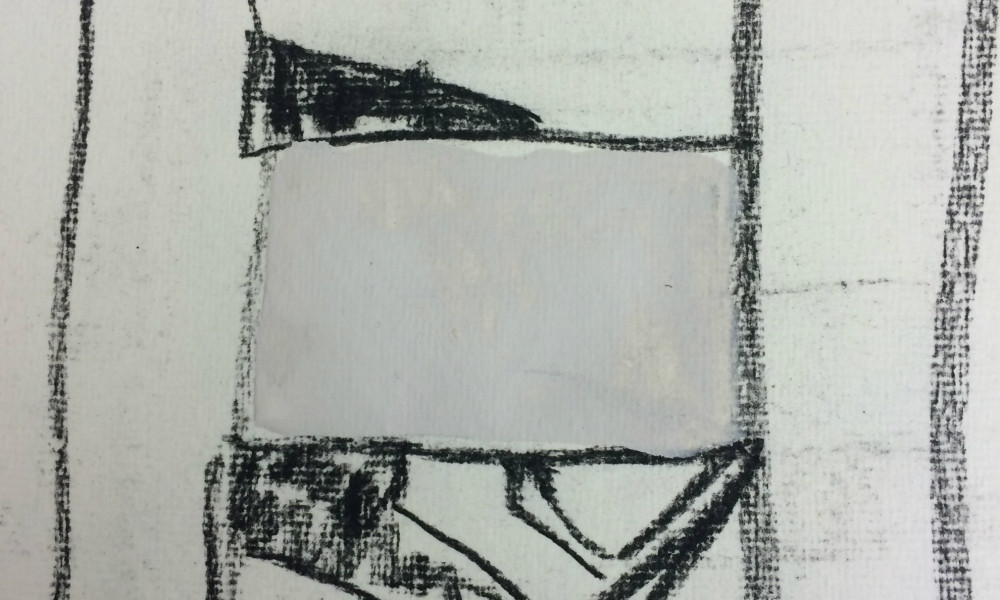
A set of Object Relations Cards – The Story of an Artistic Encounter with Social Science
The single most significant development of my relationship with The Tavistock Institute of Human Relations was the discovery of an area of psychological theory known as Object Relations. I don’t know when I first heard the term but it began to mean something for me when I attended a Group Relations Conference in Israel. A Group Relations conference? It is a unique event that lies at the heart of the work of the Institute, where a temporary organisation is constructed in which participants explore their relationship with their inner selves in dialogue with the group and as defined by the universal constraints of time, territory and task. Taking part in of one of these events for the first time is a baptism of fire into the mechanics and soul of humanity.
You get up close and personal with how we are shaped by social processes and vice versa. This journey into human relations happens in large groups, small groups and in organisational events. Similarly to organisational life there is a management structure, authority figures whose authority in this organisation comes from previous experience of working with groups and organisations and through how they take up their roles. The context of the conference is hugely influential; mine was in Israel by the Sea of Galilee. The dynamics of human imagination are revealed in silence, in dreams, in images offered out into the group and in the images that are evoked in the mind. Stories unfold and meaning and purpose is constructed by the group. In Israel this manifested itself in concern with drought and the words of a female rabbi seemingly bringing relief through a violent storm. The group somehow projecting into her as its saviour believing its work together has brought longed for rain. These processes or fantasies of making objects in our heads and collectively are known as Object Relations, a theory of creativity profoundly explored and developed by Melanie Klein.
Of all my encounters with the archival material during the appraisal work of over 1000 boxes, a box full of Object Relations cards is the most prescient. These were cards developed as a projective test by Herbert Phillipson at either the Tavistock Institute or the Tavistock Clinic in the mid 1950’s and are similar in their use to the inkblot of the Rorschach test. That means the images on the cards invite multiple readings, meanings and interpretations. By then Melanie Klein’s feminine theory of identity was gathering ground, social scientists at the Institute were uniquely concerned with the person and their interaction with the system and what this meant for their wellbeing and ultimately the improvement of human relations in society. Klein’s theory as it showed in the behaviour of the individual meant splitting off unwanted emotions onto others. Extended to groups it resulted in collective fantasies, splitting off and behaving defensively in the face of difficult tasks such as caring for the sick.
To my knowledge the cards are no longer used by anyone practicing at the Institute today, they might be in use by therapists at the Tavistock clinic. There is a website run by the Objects Relation Technique Institute that provides sets of cards and a manual on scoring the test including case studies. Since that Group Relations conference and the illumination of the origins of the image I’ve been researching the role of the artist, the relationship of artists to groups and organisations and that research is now bringing me back to my own art and the study of objects – still life.
I’ve pinned a set of these cards to the wall in the studio with a theory that their presence might guide me in my renewed artistic practice. Originally they might have been lithographs a printing technique that enabled reproduction of their wispy, pencil like lines and the murky ambiguity or in-betweenness that invites the respondent to reveal something of their inner world. They are scenes that just about evoke home, a piece of furniture that could be the edge of a bed, open spaces reminiscent of a surreal painting. Who is the person lurking behind a door? I find it difficult to relate to them as of my time and this difficulty in relating takes me to a question that I hope to explore further through my artistic research and the archive project itself. How our object relations might change and shift through time and how that links with how we understand social change.This question I will research through the objects of still life and their changing relationship with the field.
Related
About Juliet Scott
I am the TIHR Archive Curator and artist-in-residence. I lead this truly exciting and groundbreaking project with its ethos of collaborative archival practice and its possibilities for bringing the unique and innovative social science approach of The Tavistock Institute to a renewed and wider audience. I am a current TIHR practitioner and teach organisational consultancy and change in the UK and further afield. Last year this took me to Argentina where I also travelled discovering the unique volcanic landscape of Payunia. More than anything I like to walk with friends and family, I have an allotment in Walworth, South East London where I am famous for my year round BBQs. It is very special place.Latest Posts By Juliet Scott
- 07.12.21#15 Social Dreaming Matrix: Covid-19 a year on. Notes from the final matrix and review 24th June 2021
- 07.12.21#14 Social Dreaming Matrix: Covid-19 – a year on. Notes from 17th June 2021
- 06.08.21# 12 Social Dreaming Matrix: Covid-19 a year on. Notes from 3rd June 2021
- 06.03.21# 11 Social Dreaming Matrix: Covid-19 a year on. Notes from 27 May 2021
- 05.28.21#10 Social Dreaming Matrix: Covid-19 a year on. Notes from 20th May